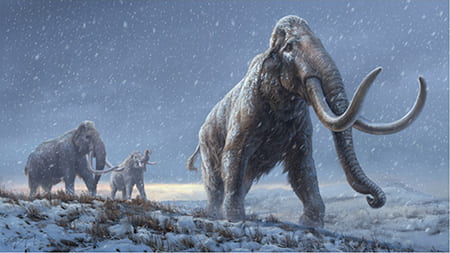Category: Publications
-

A draft human pangenome reference
Abstract Here the Human Pangenome Reference Consortium presents a first draft of the human pangenome reference. The pangenome contains 47 phased, diploid assemblies from a cohort of genetically diverse individuals (source). These assemblies cover more than 99% of the expected sequence in each genome and are more than 99% accurate at the structural and base…
-

Comparative genomics of Balto, a famous historic dog, captures lost diversity of 1920s sled dogs
Abstract We reconstruct the phenotype of Balto, the heroic sled dog renowned for transporting diphtheria antitoxin to Nome, Alaska, in 1925, using evolutionary constraint estimates from the Zoonomia alignment of 240 mammals and 682 genomes from dogs and wolves of the 21st century. Balto shares just part of his diverse ancestry with the eponymous Siberian…
-

The contribution of historical processes to contemporary extinction risk in placental mammals
Abstract Species persistence can be influenced by the amount, type, and distribution of diversity across the genome, suggesting a potential relationship between historical demography and resilience. In this study, we surveyed genetic variation across single genomes of 240 mammals that compose the Zoonomia alignment to evaluate how historical effective population size (Ne) affects heterozygosity and…
-

Indigenous peoples and local communities as partners in the sequencing of global eukaryotic biodiversity
Several large current initiatives seek to catalog the genomes of Earth’s eukaryotic biodiversity. How do we ethically access and use samples from all species, including those under the custodianship of Indigenous Peoples and Local Communities? UC Santa Cruz Genomics Institute researcher Ann McCartney and her colleagues provide a framework
-

Modular automated microfluidic cell culture platform reduces glycolytic stress in cerebral cortex organoids
Time line chart of the human cerebral organoid generation protocol over the span of 18 days Abstract Organ-on-a-chip systems combine microfluidics, cell biology, and tissue engineering to culture 3D organ-specific in vitro models that recapitulate the biology and physiology of their in vivo counterparts. Here, we have developed a multiplex platform that automates the culture…
-

Semi-automated assembly of high-quality diploid human reference genomes
Abstract The current human reference genome, GRCh38, represents over 20 years of effort to generate a high-quality assembly, which has benefitted society1,2. However, it still has many gaps and errors, and does not represent a biological genome as it is a blend of multiple individuals3,4. Recently, a high-quality telomere-to-telomere reference, CHM13, was generated with the…
-

The complete sequence of a human genome
Nurk, S., Koren, S., Rhie, A., Rautiainen, M., Bzikadze, A. V., Mikheenko, A., Vollger, M. R., Altemose, N., Uralsky, L., Gershman, A., Aganezov, S., Hoyt, S. J., Diekhans, M., Logsdon, G. A., Alonge, M., Antonarakis, S. E., Borchers, M., Bouffard, G. G., Brooks, S. Y., … Phillippy, A. M. (2022). The complete sequence of a…
-

Identification of high confidence human poly(A) RNA isoform scaffolds using nanopore sequencing
Abstract Nanopore sequencing devices read individual RNA strands directly. This facilitatesidentification of exon linkages and nucleotide modifications; however, using conventional directRNA nanopore sequencing, the 5′ and 3′ ends of poly(A) RNA cannot be identifiedunambiguously. This is due in part to RNA degradation in vivo and in vitro that can obscuretranscription start and end sites. In…
-

Pangenomics enables genotyping of known structural variants in 5202 diverse genomes
Sirén, Jouni, et al. “Pangenomics Enables Genotyping of Known Structural Variants in 5202 Diverse Genomes.” Science, vol. 374, no. 6574, 2021, https://doi.org/10.1126/science.abg8871.
-

The complete sequence of a human genome
In 2001, Celera Genomics and the International Human Genome Sequencing Consortium published their initial drafts of the human genome, which revolutionized the field of genomics. While these drafts and the updates that followed effectively covered the euchromatic fraction of the genome,
-

Cancer microenvironment and genomics: evolution in process
Abstract Cancer heterogeneity is a result of genetic mutations within the cancer cells. Their proliferation is not only driven by autocrine functions but also under the influence of cancer microenvironment, which consists of normal stromal cells such as infiltrating immune cells, cancer-associated fibroblasts, endothelial cells, pericytes, vascular and lymphatic channels. The relationship between cancer cells…
-

Oldest DNA sequences reveal how mammoths evolved
Caption: This illustration represents a reconstruction of the steppe mammoths that preceded the woolly mammoth, based on genetic analysis of ancient mammoth DNA. (Illustration by Beth Zaiken/Centre for Palaeogenetics) Analysis of ancient DNA sequences recovered from mammoth teeth reveal North American mammoths were descended from two earlier mammoth lineages February 17, 2021 | Tim Stephens…